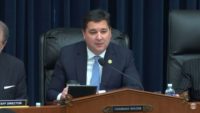The U.S. Environmental Protection Agency and the U.S. Army issued a final rule Aug. 29 that will open up to development thousands of acres of wetlands formerly considered protected “waters of the United States” under the Clean Water Act. The EPA and Army move, which follows an earlier U.S. Supreme Court opinion that invalidated parts of an earlier proposal, is unpopular with builders, as well as environmental advocates and others.
The move allows the Army Corps of Engineers to resume issuing approved jurisdictional determinations that were paused following the court decision in May, Michael Connor, assistant Army secretary for civil works, said in a statement.
The amendments to the revised EPA-Army WOTUS final rule, which will take effect once published in the Federal Register, modifies an earlier proposal they released in light of the ruling in the case Sackett v EPA. The updated version removes the contentious “significant nexus standard” for tributaries and adjacent wetlands that had been outlined by former Justice Anthony Kennedy in the 2006 Rapanos decision for both wetlands and ephemeral streams.
Environmental advocates favored the significant nexus test because it allowed ephemeral and intermittent streams and headwaters to be protected in cases where they had an ecological connection to larger water bodies. The significant nexus test also applied to wetlands considered “adjacent” to those larger water bodies. The new rule revises the definition of “adjacent” to specify that it applies only with continuous surface connections.
Construction industry groups have favored the less inclusive definition outlined by former Justice Antonin Scalia, which required protection for waters that had a permanent surface connection to “navigable” waters.
But construction groups say the new rule is still too vague and threatens to slow approvals for infrastructure projects.
“The agencies were only willing to do what was irrefutably required, likely leaving the regulated community in a state of confusion and once again resorting to case-by-case decisions on whether the feds have control over construction work in ephemeral waterways and seasonally dry intermittent tributaries,” says Brian Turmail, vice president of public affairs and strategic initiatives for the Associated General Contractors of America. It filed a brief in the Sackett case that had an impact on WOTUS and is part of two other federal lawsuits brought by industry groups challenging the rule.
Other construction industry groups shared a similar position. The rule “spurns the opportunity to deliver a lasting solution to protect the nation’s wetlands and brazenly hands this responsibility back to the courts,” Dave Bauer, president and CEO of the American Road & Transportation Builders Association, said in a statement.
Ben Brubeck, vice president of regulatory, labor and state affairs for the Associated Builders and Contractors, said, also in a statement, that the “revisions fail to fully implement” the Supreme Court ruling.
“This rule, issued without meaningful opportunities for input from the construction industry and other stakeholders, will contribute to continued regulatory uncertainty and unnecessary delays for critical infrastructure projects across the nation,” he said.
Environmental groups were also critical of the rule, which they say it weakens wetlands protections. It “spells out how the Sackett decision has undermined our ability to prevent the destruction of our nation’s wetlands,” Jim Murphy, director of legal advocacy for the National Wildlife Federation, said in a statement.
Patrice Simms, Earthjustice vice president of litigation for healthy communities, said the rule allows developers to “bulldoze and fill wetlands indiscriminately.”
There are supporters of the rule. The revised rule will likely provide more clarity, says Mark Sudol, former chief of the Corps regulatory program and now a senior advisor at Dawson & Associates. Waters that will continue to be protected under the Clean Water Act must have a “relatively permanent” surface connection, he adds. Many ephemeral streams and intermittent waters would no longer be protected, he says.
But some confusion determining which intermittent waters will be considered waters of the U.S. could still occur, Sudol notes.
Intermittent streams largely fed by groundwater on a “relatively permanent” basis will likely be protected, he says. But making those decisions “will likely be case by case calls by the local [Corps] district,” Sudol adds. “The Supreme Court wasn’t clear and the regulations use the wording from the Supreme Court itself, so it’s going to be very difficult.”
EPA and Army officials plan to hold a webinar Sept. 12 to discuss the updated WOTUS rule.






